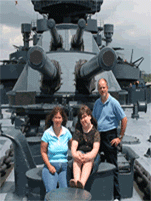cheap of gas generator. Model airplane engine???????
14 posts
• Page 1 of 1
Now if you leave the propeller on and use a pulley drive system with the generator - then BAM- you have a fan and a generator!
-

starleen2 - 5th Teardrop Club
- Posts: 16272
- Images: 224
- Joined: Sat May 12, 2007 8:26 pm
- Location: Pea Ridge ,AR
I have never heard a model airplane engine that was very quite. You will not make friends around a campground with one unless you can make a good muffler system.
Not sure I belive that it would generate enough power to make it worthwhile, but of course I could be wrong!
Not sure I belive that it would generate enough power to make it worthwhile, but of course I could be wrong!

Kerry
Build and Camping Photos
Build and Camping Photos
-

toypusher - Site Admin
- Posts: 43040
- Images: 324
- Joined: Fri Jan 28, 2005 12:21 pm
- Location: York, PA Area
 I was thinking (ya dangeras) get a genurater 12v put blades on it wire it up put on pole about 10+ft hook to battery then I can charge my battery it sheaper then a 65w solor system.
I was thinking (ya dangeras) get a genurater 12v put blades on it wire it up put on pole about 10+ft hook to battery then I can charge my battery it sheaper then a 65w solor system.


